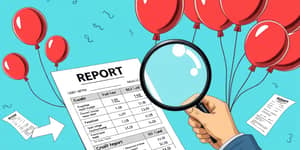
In a nation grappling with soaring balances and high interest rates, the dream of becoming debt-free can feel both exhilarating and overwhelming. With total U.S. credit card debt hitting over $1.2 trillion in 2025, many wonder if realistic payoff schedules are nothing more than wishful thinking.
As of early 2025, American households collectively carry $1.2 trillion in credit card debt, marking a 10% increase from the prior year. The average household owes roughly $15,000, while individuals carry about $7,000 each.
Despite a slight dip in delinquency rates to 3.05%, balances continue to swell, driven by an average APR of 21.37%. For many, the compounding effect of high interest means that making only minimum payments can extend repayment over a decade.
Understanding the factors fueling this escalation is vital before plotting a payoff path. Economic pressures and behavioral trends often collide to form a perfect storm of borrowing.
Two predominant methods—Debt Snowball and Debt Avalanche—offer structured pathways to payoff. Each has distinct advantages based on psychology and savings.
The Debt Snowball method targets the smallest balance first, creating quick victories that fuel ongoing momentum. Conversely, the Debt Avalanche tackles the highest interest rates first, minimizing total interest paid.
Can ordinary Americans realistically become debt-free within a few years? The answer hinges on income, spending habits, and disciplined implementation of strategies.
Households making only minimum payments on a $15,000 balance at average APR may face a payoff timeline exceeding 10 years. However, by increasing monthly contributions—even modestly—borrowers can shave years off that schedule.
Side hustles and increased earnings can accelerate progress dramatically. Pairing extra income streams with diligent budgeting often transforms a decade-long journey into a three- to five-year sprint.
Beyond numbers, the psychological dimension of debt repayment is critical. Cultivating resilience and celebrating small wins keeps motivation alive during challenging periods.
Modern technology and professional guidance can streamline each step of the journey. Budgeting apps, debt-tracking spreadsheets, and credit counseling services provide clarity and accountability.
Nonprofit organizations recommend a four-step approach: surveying the damage, setting actionable goals, adjusting budgets regularly, and seeking expert help when needed. Automated payment plans and consolidation options can simplify multiple balances into single, manageable obligations.
While the prospect of debt elimination may initially seem daunting, careful planning and sustained effort make it attainable. Start by assessing every obligation, prioritizing high-cost debts, and setting a firm monthly target.
Pair your plan with realistic timelines, monitor progress each month, and adjust contributions as circumstances evolve. Remember, the journey is as much about transforming spending habits as it is about reducing numbers on paper.
With dedication, clear strategies, and a resilient mindset, a debt-free future becomes less a fantasy and more an achievable goal. Take the first step today, and within months, you might find yourself celebrating milestones you once thought impossible.
References













